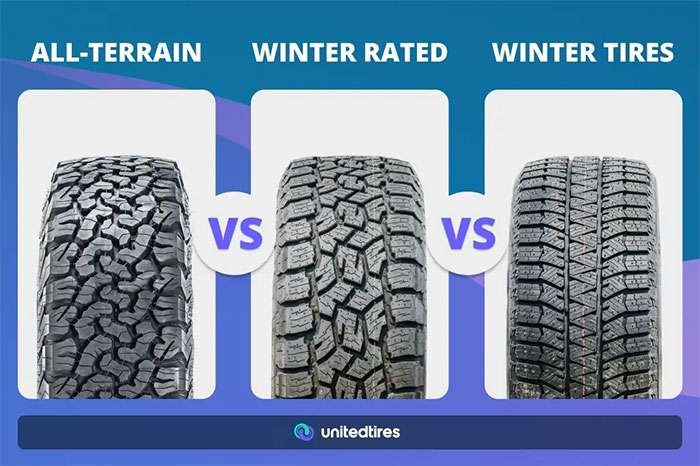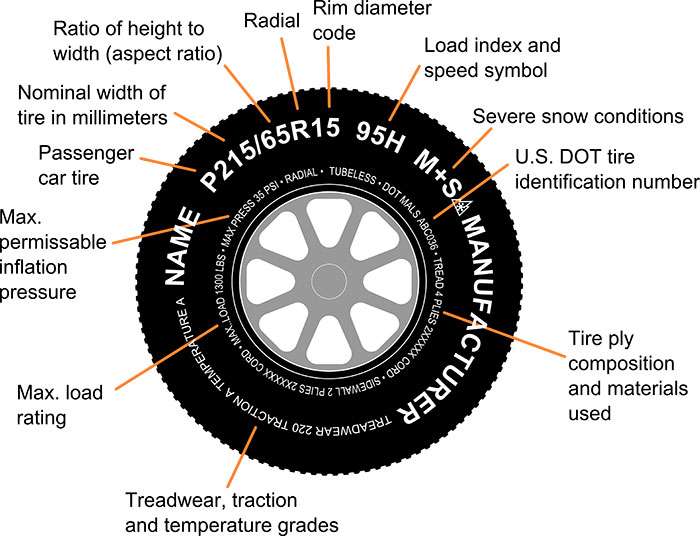
When it comes to choosing the best tires for an SUV, most drivers face a unique set of challenges that don't apply to standard passenger cars. The tread life varies dramatically depending on your SUV's weight, how you drive, and the roads you tackle.
SUV tires are engineered specifically to handle the demands of heavier vehicles with higher centers of gravity. These tires feature thicker rubber compounds and wider section widths compared to standard car tires, making them essential for proper SUV performance and safety. The specialized construction supports the increased weight while maintaining the handling characteristics your SUV was designed to deliver.
Whether you're navigating snowy mountain passes that demand superior ice traction or simply want reliable everyday performance, finding quality tires at the right price can seem daunting. We understand that balancing performance requirements with budget constraints is a real concern for SUV owners.
This guide covers everything you need to make the right tire decision for your SUV. We'll break down tire specifications, compare different types for various driving conditions, and share proven strategies to get the best value without sacrificing safety or performance. Understanding what your SUV actually needs from its tires is the first step toward making a smart purchase.
Understanding your specific SUV requirements is the foundation for making a smart tire purchase. Taking time to research your vehicle's needs prevents costly mistakes and ensures you get the performance you expect.
Your owner's manual contains the exact tire specifications calculated by the engineers who designed your SUV. These aren't suggestions—they're precise requirements for optimal performance, safety, and warranty protection.
Look for these critical specifications:
Tire size (width, aspect ratio, and wheel diameter)
Recommended inflation pressure for both front and rear positions
Load index and speed rating requirements
Any seasonal tire recommendations
Following manufacturer specifications maintains your vehicle's handling characteristics and fuel economy. More importantly, using the correct specifications keeps your warranty intact and ensures your SUV performs as designed.
SUVs carry more weight than standard passenger vehicles, making load capacity essential for safe operation. The load index—a number on your tire sidewall—tells you exactly how much weight each tire can support safely.
Speed ratings use letter codes to indicate maximum sustained speeds. Family SUVs typically require "H" ratings (130 mph) or "V" ratings (149 mph), while performance SUVs may need higher ratings for their intended use.
Using tires with insufficient load or speed ratings creates safety risks, especially during emergency situations or when carrying heavy cargo. However, choosing ratings that exceed your needs simply increases costs without providing practical benefits.
SUV tires feature reinforced sidewalls designed to support greater vehicle weight and higher centers of gravity. This reinforcement prevents sidewall flexing that could compromise handling or cause tire failure.
The tread patterns on SUV tires are typically deeper and more aggressive than car tires. These patterns provide better traction across different surfaces while the rubber compounds balance durability with the performance characteristics needed for heavier vehicles.
These engineering differences explain why choosing the cheapest option rarely delivers the best results for SUV owners. When selecting tires for your SUV, understanding these fundamental design differences helps you evaluate which options will actually meet your vehicle's requirements.

Image Source: www.utires.com
Choosing the right tire type for your SUV makes the difference between confident handling and struggling with poor traction. Each tire category serves specific driving conditions and performance requirements.
All-season tires deliver reliable performance on paved surfaces year-round. These tires channel water effectively during rainy weather while providing quieter rides and improved fuel economy. However, they're designed strictly for paved roads and lack the grip needed for off-road adventures.
All-terrain tires feature aggressive, chunky tread patterns built for traction on sand, mud, and loose gravel. The reinforced internal construction protects sidewalls from sharp rocks, and they handle the demands of lower air pressures during off-road driving. The trade-off comes in the form of increased road noise and a harsher ride compared to all-season options.
Winter tires provide superior stopping power, acceleration, and cornering grip on icy surfaces. The specialized rubber compounds stay flexible in freezing temperatures, while hundreds of biting edges dig into snow and ice for maximum traction.
Install winter tires in complete sets of four for balanced vehicle control. Look for the Three-Peak Mountain Snowflake (3PMSF) symbol, which confirms the tire has passed rigorous snow traction testing. Switch back to all-season tires when temperatures consistently rise above 45°F, as winter tires wear faster in warm weather.
High-performance SUVs demand tires that deliver maximum dry pavement grip with elevated speed ratings. These tires use asymmetric tread designs for enhanced handling and cornering, combined with rigid center sections that provide precise steering response.
Today's performance SUV tires balance aggressive grip with ride comfort through advanced rubber compounds and construction techniques that improve both wet and dry traction.
Serious off-road enthusiasts need mud-terrain tires that excel in mud, dirt, gravel, and rock crawling conditions. These tires feature oversized tread blocks, deep voids for self-cleaning, and reinforced sidewalls that resist punctures from sharp rocks. While they dominate off-road terrain, expect increased road noise and reduced fuel economy due to their heavier, more aggressive construction.

Image Source: en.wikipedia.org
Reading the codes on your SUV tire sidewall gives you the information needed to make smart purchasing decisions. These markings reveal crucial details about size, capacity, and performance ratings that directly affect how your SUV handles and performs.
The tire size code appears as something like P225/70R16 and breaks down into specific components. The "P" designation indicates passenger vehicle tires, which covers most SUVs, while "LT" designates light truck tires for heavier SUVs. The three-digit number (225) shows the tire width in millimeters. The two-digit number after the slash (70) represents the aspect ratio—sidewall height as a percentage of width. The "R" confirms radial construction, and the final number (16) indicates wheel diameter in inches.
Load index numbers typically range from 75-105 for SUVs and indicate the maximum weight each tire can safely carry. A load index of 94, for example, means each tire supports up to 1,477 pounds. The speed rating follows as a letter code showing maximum sustained speed capability. Common ratings include S (112 mph), H (130 mph), and V (149 mph). Your replacement tires must match or exceed the original load and speed ratings specified for your SUV.
Treadwear ratings typically range from 200-800 and indicate expected tire longevity—higher numbers suggest longer-lasting tires. A tire rated 400 should theoretically last twice as long as one rated 200. Traction grades use letters (AA, A, B, C) to reflect wet-stopping performance, with AA providing the best wet traction. Temperature resistance ratings (A, B, C) show the tire's ability to dissipate heat effectively.
Look for the Department of Transportation (DOT) code printed on the tire sidewall. The last four digits tell you when the tire was manufactured—the first two numbers indicate the week, and the last two show the year. If you see "0424," the tire was made during the 4th week of 2024. Avoid purchasing tires more than two years old, as rubber compounds can deteriorate over time even without use.
Getting quality tires for your SUV at the right price takes smart shopping strategies and proper maintenance. The good news is you don't have to sacrifice performance to stay within budget.
Manufacturer rebates on four-tire purchases can put significant money back in your pocket. Most promotions allow one month after the promotion ends to submit claims. Timing matters for maximum savings—summer tires cost less during winter months, while winter tires drop in price during summer.
Brands like Cooper, Falken, Kumho, and Dunlop deliver excellent performance-to-price ratios. These options provide solid traction, durability, and comfort without the premium price tags. The performance difference compared to top-tier brands is often minimal for everyday driving.
Regular tire rotation every 6,000-8,000 miles ensures even wear patterns. Check tire pressure monthly to maintain optimal inflation. Proper wheel alignment prevents premature wear and improves vehicle handling. These simple steps can double your tire's useful life.
Two-wheel-drive vehicles with tires showing less than 30% wear can safely replace just one tire. At 40-50% wear, replace two tires and install them on the rear axle for better handling. All-wheel-drive vehicles typically require all four tires to be replaced together to prevent expensive drivetrain damage.
Selecting the right SUV tires doesn't have to be complicated when you have the right information. We've covered the essential factors that determine the best tire choice for your specific needs, from reading specifications to finding the best deals without sacrificing quality.
Your owner's manual remains your most reliable guide for tire specifications, while understanding your driving conditions helps you choose between all-season, all-terrain, winter, or performance options. Learning to read tire sidewall markings gives you the confidence to make informed decisions instead of relying entirely on sales recommendations.
Smart shopping makes a significant difference in your final cost. Comparing prices across retailers, timing purchases for seasonal discounts, and considering quality mid-range brands can save hundreds of dollars on a complete set. Regular maintenance like proper rotation and inflation extends tire life substantially, adding even more value to your investment.
Safety should never be compromised for savings. The right tires deliver dependable traction, responsive handling, and reliable braking when you need them most. Quality tires at fair prices offer better long-term value than cheap alternatives that wear out quickly or fail when conditions get challenging.
We believe this guide gives you the knowledge to make smart tire decisions with confidence. Your SUV deserves tires that match its capabilities while fitting your budget. Whether you're tackling daily commutes or weekend adventures, the right tire choice keeps you moving safely and efficiently.
Understanding your SUV's specific tire requirements and shopping strategically can save hundreds of dollars while ensuring optimal safety and performance.
• Always check your owner's manual for exact tire specifications - following manufacturer guidelines maintains warranty protection and ensures proper performance.
• Compare tire types based on your driving needs: all-season for daily use, all-terrain for mixed surfaces, winter for snow/ice, and performance for sporty driving.
• Shop smart by comparing prices across retailers, looking for rebates, and considering mid-range brands that offer excellent value without premium costs.
• Extend tire life through proper maintenance: rotate every 6,000-8,000 miles, maintain correct air pressure monthly, and ensure proper wheel alignment.
• Learn to read tire sidewall codes to understand load capacity, speed ratings, and manufacturing dates - this knowledge prevents costly mistakes and unsafe choices.
The key to successful SUV tire selection lies in balancing your specific driving requirements with smart shopping strategies, ultimately delivering both safety and savings.
When selecting SUV tires, consider your vehicle's specifications, driving conditions, and personal preferences. Check your owner's manual for recommended tire size, load capacity, and speed rating. Think about whether you need all-season, all-terrain, winter, or performance tires based on your typical driving environment and style.
To save money on SUV tires, compare prices across different retailers, including warehouse clubs and online stores. Look for seasonal discounts and manufacturer rebates. Consider mid-range tire brands that offer good performance at more reasonable prices. Proper tire maintenance, including regular rotation and correct inflation, can also extend tire life and save money in the long run.
Tire specifications are found on the sidewall and include information about size, load capacity, and speed rating. The tire size code (e.g., P225/70R16) indicates the tire type, width, aspect ratio, and wheel diameter. The load index and speed rating follow this code. Additionally, treadwear, traction, and temperature grades provide information about the tire's expected longevity and performance.
Replace your SUV tires when the tread depth reaches 2/32 of an inch or if you notice uneven wear, bulges, or cracks in the sidewalls. For two-wheel-drive vehicles with tires less than 30% worn, replacing just one tire may be acceptable. However, if wear is 40-50%, replace two tires, installing them on the rear axle. All-wheel-drive vehicles typically require all four tires to be replaced together to prevent drivetrain damage.
Yes, SUVs often require specialized tires due to their weight and design. All-season tires are popular for everyday use, providing balanced performance in various conditions. All-terrain tires offer better off-road capability while maintaining good on-road performance. For snowy regions, winter tires provide superior traction. Performance SUVs may benefit from high-performance tires designed for enhanced grip and handling at higher speeds.